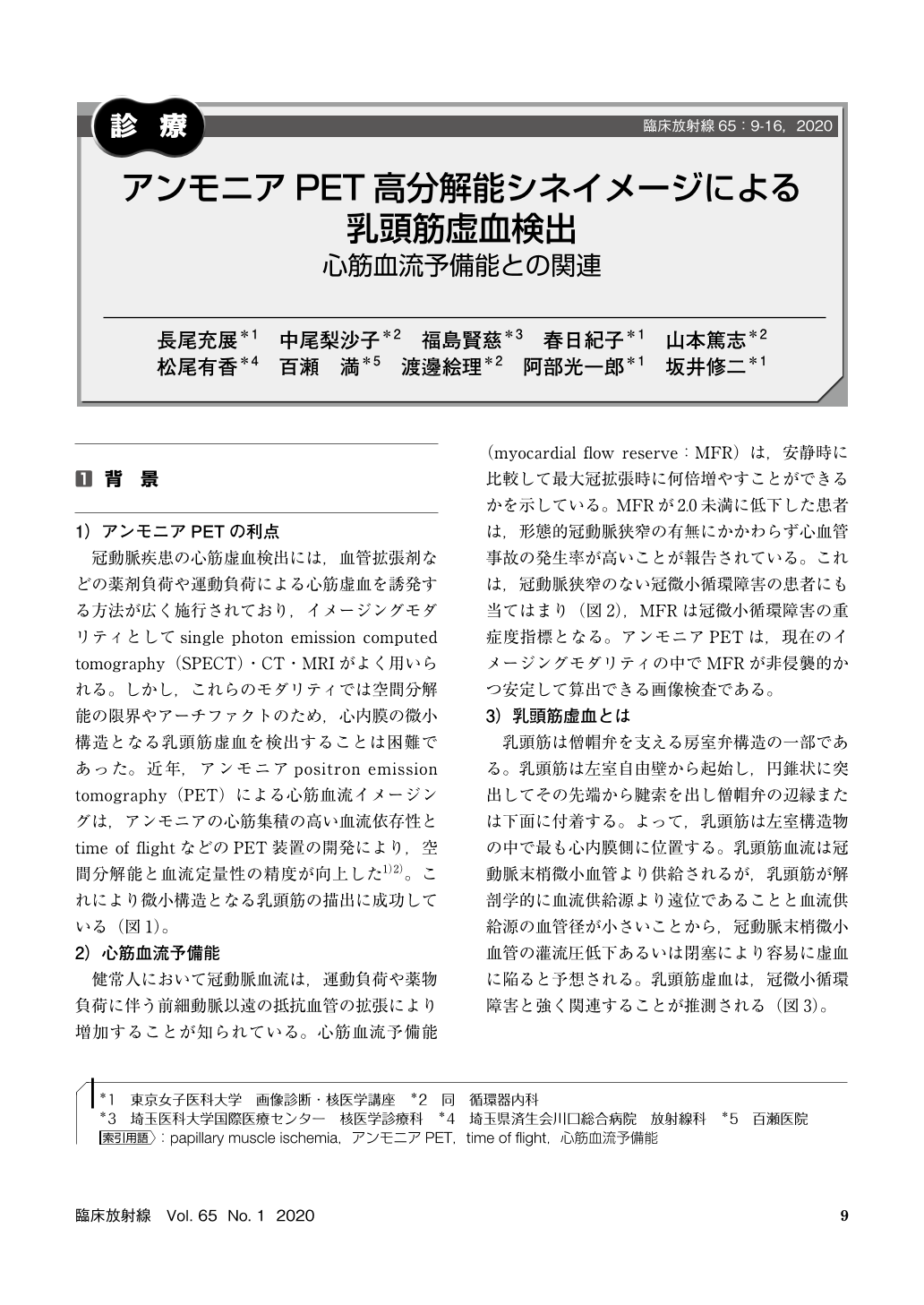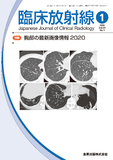Japanese
English
- 有料閲覧
- Abstract 文献概要
- 1ページ目 Look Inside
- 参考文献 Reference
冠動脈疾患の心筋虚血検出には,血管拡張剤などの薬剤負荷や運動負荷による心筋虚血を誘発する方法が広く施行されており,イメージングモダリティとしてsingle photon emission computed tomography(SPECT)・CT・MRIがよく用いられる。しかし,これらのモダリティでは空間分解能の限界やアーチファクトのため,心内膜の微小構造となる乳頭筋虚血を検出することは困難であった。近年,アンモニアpositron emission tomography(PET)による心筋血流イメージングは,アンモニアの心筋集積の高い血流依存性とtime of flightなどのPET装置の開発により,空間分解能と血流定量性の精度が向上した1)2)。これにより微小構造となる乳頭筋の描出に成功している(図1)。
Myocardial papillary muscle(PM)plays an important role in cardiac contractility. PM arises from end-myocardium and is located most distant site under coronary circulation. Thus, PM can be foremost area at risk of myocardial ischemia in coronary artery disease. However, it is difficult to detect PM ischemia by myocardial perfusion SPECT due to the limited spatial resolution. Recent technological development and improved spatial resolution enables the detection of endocardial ischemia using high-resolution time of flight PET. We propose the detection method of PM ischemia using high-resolution cine imaging of ammonia PET, and investigate the association with PM ischemia and myocardial flow reserve(MFR). Our results show that PM ischemia was seen in 15 of 47 patients with coronary artery disease(32%), and that global MFR was significantly lower for patients with PM ischemia than those without. In conclusion, high-resolution cine imaging derived from ammonia PET enables detection of PM ischemia in about 30% of patients with coronary artery disease. PM ischemia associates with reduced global-MFR, suggesting that it is an important sign of early ischemia confined to the papillary muscle or the microvascular injury.

Copyright © 2020, KANEHARA SHUPPAN Co.LTD. All rights reserved.


